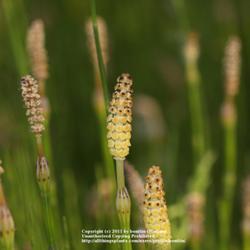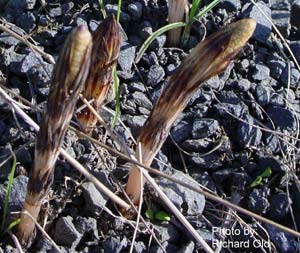
Horsetail (Equisetum arvense) has been around since dinosaur days. It is a common perennial weed in the northern half of North America, especially in moist soils. Upright stems with cone-like tips bear spores, but horsetail owes its staying power to spreading roots. These often run both deep and wide, so extensive digging is needed to banish horsetail. After digging, mulch over the affected area, and cut off any new shoots at the soil line as soon as they emerge.
Weed Control TechniquesDigging. Weeds that regrow from persistent roots must be dug. Use a spade or digging fork to dig spreading perennials, such as bindweed, Canada thistle, and quackgrass. Start digging a foot away from the plant's center to loosen the soil. Then lift the weed from beneath, which reduces how many root pieces are likely to break off and regrow. Dandelion, dock, and other weeds that grow from persistent taproots can be dug the same way, or you can use a special fork-like tool called a dandelion weeder to pry them up. Dig very large taproots that are difficult to pry loose. In lawns and other places where digging dandelions is not practical, use a sharp knife to slice off the leaves and the top inch or two of taproot at a diagonal angle. Some weeds that are easily pulled when the soil is moist must be dug from dry soil.

Mulching. Mulch that's more than 2 inches thick can deprive most weed seeds of the light they need to germinate and grow. In vegetable and flower gardens, you can mulch with wheat straw (which has fewer weed seeds than hay), chopped leaves, grass clippings, or many other organic materials. Where weeds are numerous, try covering the soil with four to six sheets of newspaper. Then cover the newspapers with 2 to 3 inches of organic mulch. Pieces of scrap carpeting make a good weed-suppressing mulch to use in pathways between rows. When mulching beneath shrubs and trees, place a sheet of landscape fabric over the soil, then cover it with 3 inches of organic mulch. An edging (a 4- to 6-inch-wide strip of rot-proof material driven into the ground vertically) of brick, stone, or metal will help the mulch stay put, halt invasion by creeping weeds, and make the bed look neat and well groomed.
Photo courtesy of David Cappaert, Michigan State University, Bugwood.org